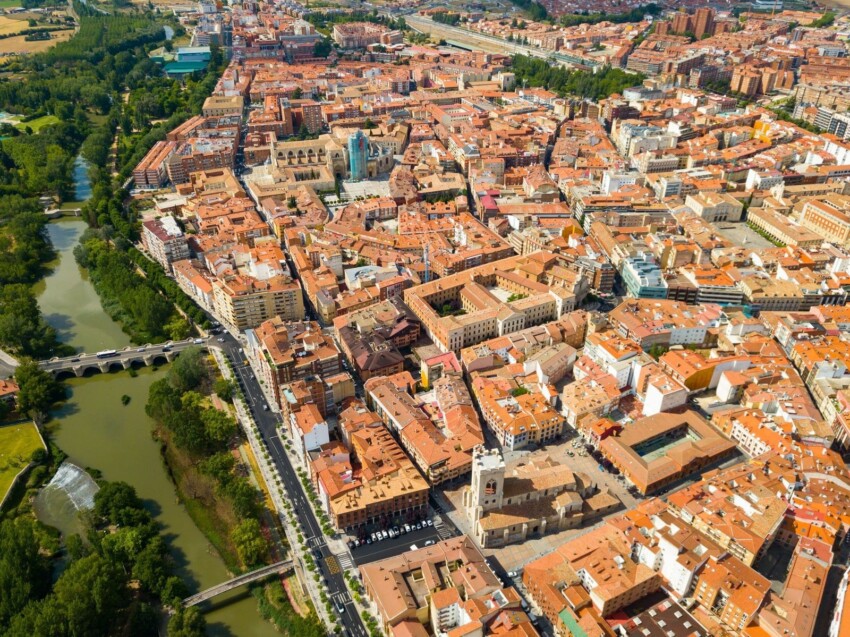

A city with a glorious past, Palencia is a town in central Spain that falls within the territories of the Autonomous Community of Castile and Leon. The city is famous because in 1212 it became the seat of the first Spanish university commissioned by King Alfonso VIII of Castile. The ancient Romans conquered this small village in 70 B.C., gave it the name Pallati and made it a rich and prosperous town. Later, with the fall of the Roman Empire, Palencia was dominated first by the Visigoths and then by the Arabs. The city experienced years of great fame during the Middle Ages when it became one of the Spanish Episcopal sees that most sought to publicise the pilgrimage to Santiago.
During the reign of Alfonso VIII Palancia was chosen as the royal residence and this later led it to become one of the most important and flourishing economic centres of the Spanish empire. Since the 1970s, this territory has been characterised by industrial development in manufacturing, textiles, metallurgy and tourism. Today, Palencia is a crossroads and an important economic centre thanks to its extensive communications network.
Palencia is a city with a rich historical heritage that boasts numerous museums, historic churches and a prestigious legacy of religious art. The artery of the city is Calle Mayor, which leads to the Plaza Mayor, Palencia’s main square.
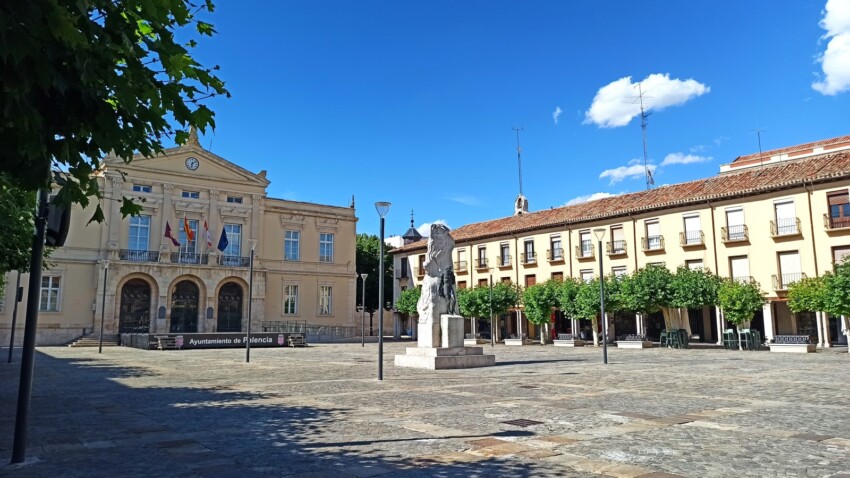
Plaza Mayor is the heart of Palencia and the meeting place for many locals. Commissioned by Charles I in the 17th century as a commercial space, the square is rectangular in shape and houses the Town Hall, a neoclassical building inaugurated in 1878. In the centre is the monument to Alonso Berruguete, a work by local artist Victorio Macho.
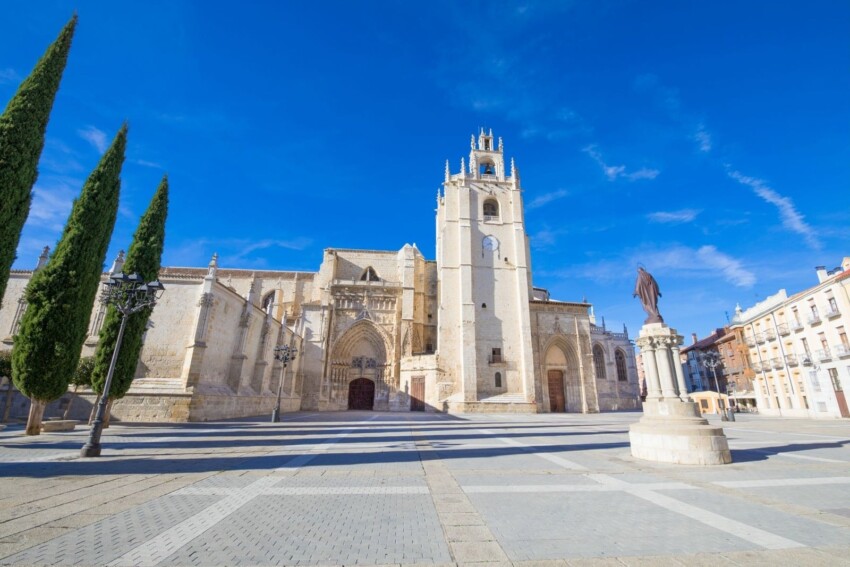
St. Anthony’s Cathedral, besides being the most important religious building in the city, is known to be the third largest cathedral in Spain. The church was built on the site of a former pre-Romanesque crypt. The main style is Gothic, although Baroque and Renaissance details were added during the various works carried out. The floor plan has three naves with a transept and cross vaults. The Main Chapel houses a valuable Renaissance altarpiece.
Its basement, on the other hand, houses the Crypt of San Antolín, which was apparently built in the 7th century to house the relics of the French martyr Antolín. These are said to have been transported from Narbonne to Palencia by King Wamba. Inside the cloister is the Cathedral Museum with works by painters such as El Greco and Zurbarán. Due to its enormous prestige, the Cathedral was declared a National Historical Monument in 1929.
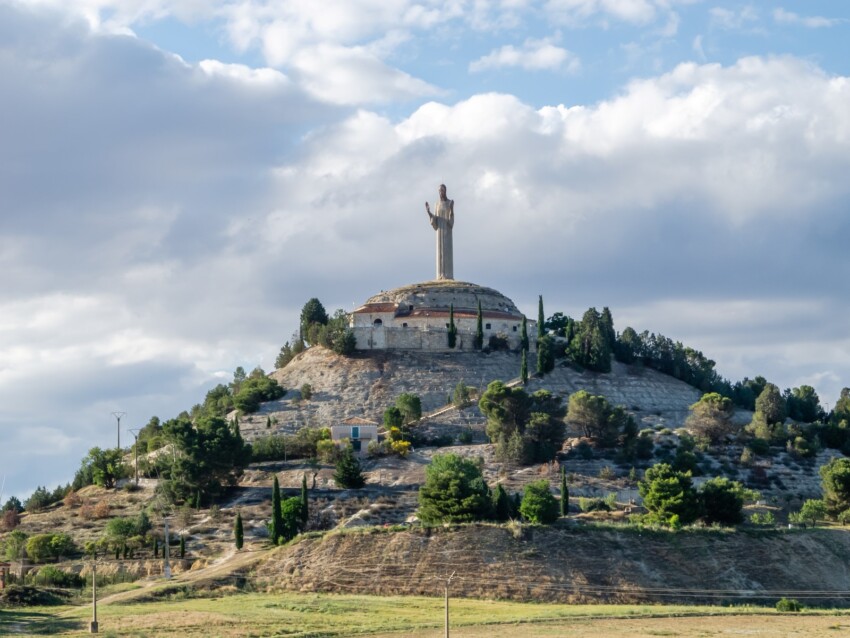
The symbol of the city of Palencia is undoubtedly the Statue of Christ of the Otero located on a hill that dominates the entire area from above. Almost 21 metres high, this is the tallest Christ in Spain and one of the tallest in the world.
The work was created by Palencian sculptor Victorio Macho (1887-1966) and is influenced by some of the most popular artistic influences of the 20th century such as Art Deco and Cubism. At the base of the statue is a crypt that houses Macho’s remains and the Victorio Macho Interpretation Centre.
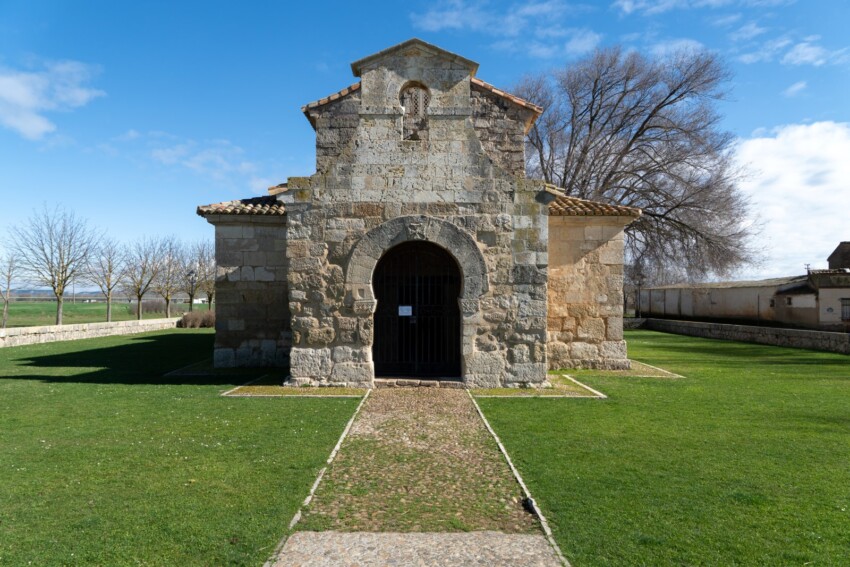
The Church of St. John the Baptist is a small 12th century hermitage that was originally located near the town of Villanueva del Río. However, this location suffered several floods and to avoid losing the church, it was dismantled stone by stone and then transported and rebuilt in Palencia at La Huerta de Guadián.
Declared a National Monument in 1981, the church now houses the Information Point on Romanesque art and architecture in the province, as these parts of Spain are rich in ancient Roman sites.
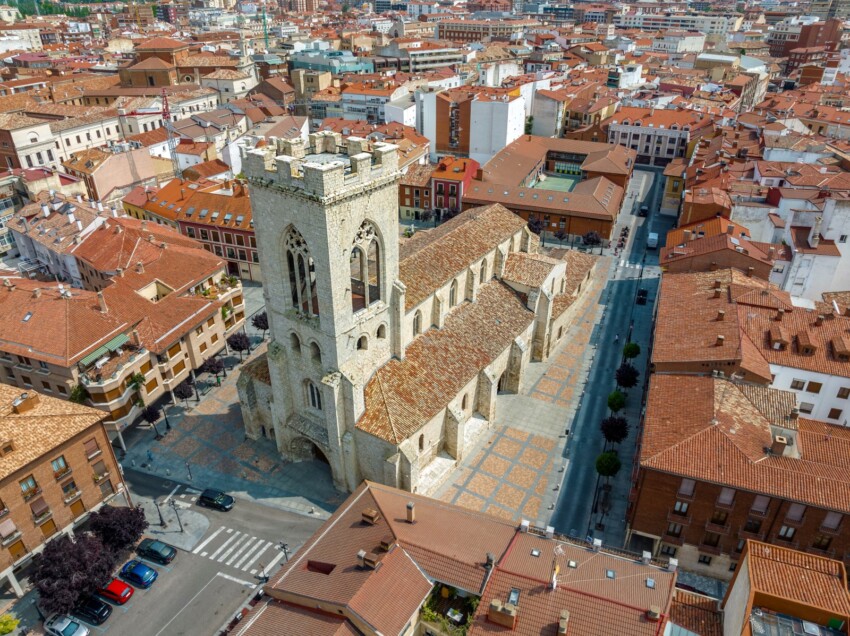
The Church of San Miguel dates back to the 11th century and appears to have been built on the remains of an earlier place of worship. The building has three naves divided by pillars and covered by cross vaults. Inside are 16th and 17th century altars and a fragment of a Gothic mural.
Legend has it that the famous medieval leader Rodrigo Díaz de Vivar (1040 – 1099) married Doña Jimena here. On the outside, the openwork tower on the main façade, whose height reaches 70 metres, attracts the gaze of all visitors.
The Museum of Palencia is located inside the building known as Casa del Cordón, which was built in the 16th century to be the residence of Francisco Núñez de Paz, lawyer and speaker of the Royal Council of Castile. A visit to the museum is interesting because it provides an insight into the history of these territories.
It houses different types of exhibits ranging from prehistoric times to the Middle Ages, including remains from the Celtiberian and Roman periods. Of particular interest is the collection of Celtiberian objects, most of which come from the excavations carried out at Monte Bernorio, Tariego and Palenzuela.
In the following map you can see the location of the main places of interest mentioned in this article.
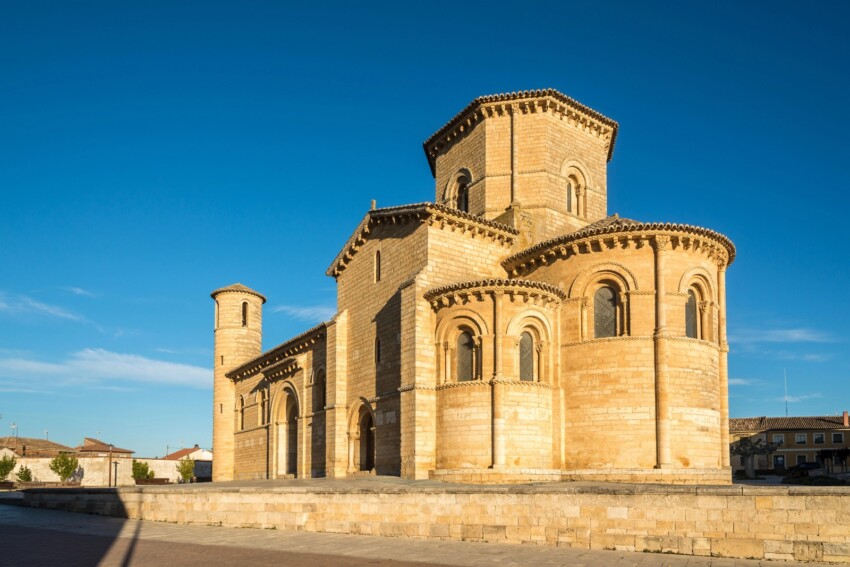
The province of Palencia offers a variety of interesting destinations, from Tierra de Campos to the mountains of Montaña Palentina. Renting a car is recommended to best explore the region.
Carrión de los Condes, 40 km from Palencia, is a key stop on the Camino de Santiago. The medieval town preserves important Romanesque monuments, including the Church of Santa María del Camino and the Church of Santiago, with its famous frieze of trades. The Monastery of San Zoilo, now converted into a hotel, is a magnificent example of Romanesque and Renaissance architecture.
The town of Frómista, 30 km from Palencia, is famous for the Church of San Martín, one of the purest examples of Romanesque architecture in Spain. Built in the 11th century, the church retains its original structure intact and is an unmissable stop on the Pilgrim’s Way to Santiago. The lock system of the Canal de Castilla offers an interesting example of 18th-century hydraulic engineering.
The Natural Park of Montaña Palentina, about 90 km from Palencia, is a paradise for nature lovers and trekkers. The area offers spectacular landscapes, with peaks exceeding 2,000 metres, glacial lakes and beech forests. The Coal Mine Interpretation Centre in Barruelo de Santullán allows visitors to discover the mining history of the region.
The Villa Romana La Olmeda, 60 km from Palencia, is one of the best-preserved Roman villas in Europe. The archaeological site, protected by a modern structure, features extraordinary mosaics from the 4th century A.D. in a perfectly preserved state. The complex includes a museum illustrating daily life in Roman times and a multimedia interpretation system.
The Canal de Castilla offers several points of interest along its route. In Calahorra de Ribas, 15 km from Palencia, you can visit historical locks and take walks along the canal. The route is ideal for cycling and offers the opportunity to observe a rich birdlife and old hydraulic constructions from the 18th century.
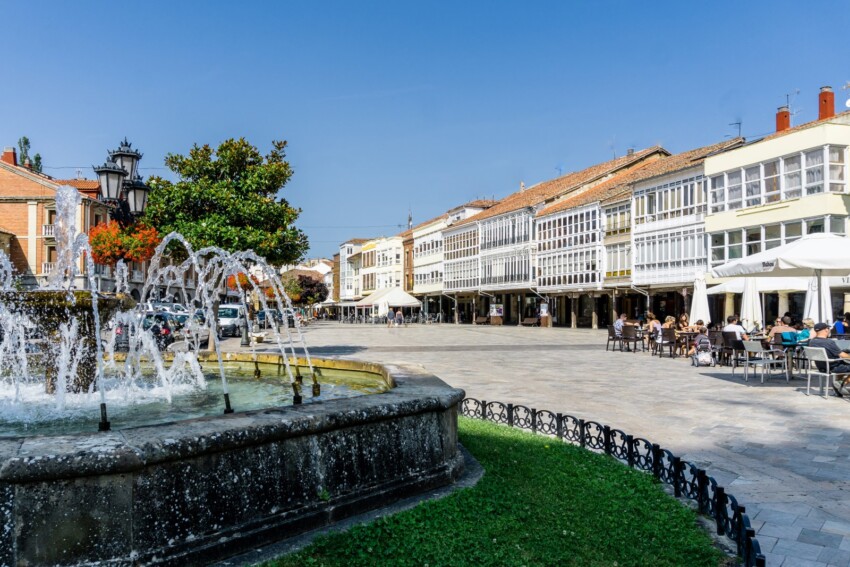
Palencia is a comfortable and welcoming city that stands out for the high concentration of accommodation it offers its visitors. From starred hotels to small inns, from hostels to flats, each visitor can find the most suitable solution.
The city is not very large and the best area to stay is in the historical centre where you will find not only the main sites of interest but also many restaurants serving traditional local dishes.
Palencia is a city with a strategic location and a modern rail and road network. Those wishing to reach this destination by car coming from the north can drive along the A67, while from the south one can travel along the A62.
The city also boasts a train station along the high-speed line connecting Madrid and León. There are also regional trains that connect to many localities in the area. The nearest airport is Valladolid, which is approximately 60 km away and can be reached via the A62.
What's the weather at Palencia? Below are the temperatures and the weather forecast at Palencia for the next few days.
Palencia is a town in the Community of Castile and León located in the centre of Spain. The city is 120 km from León, 160 km from Salamanca and 270 km from Bilbao.